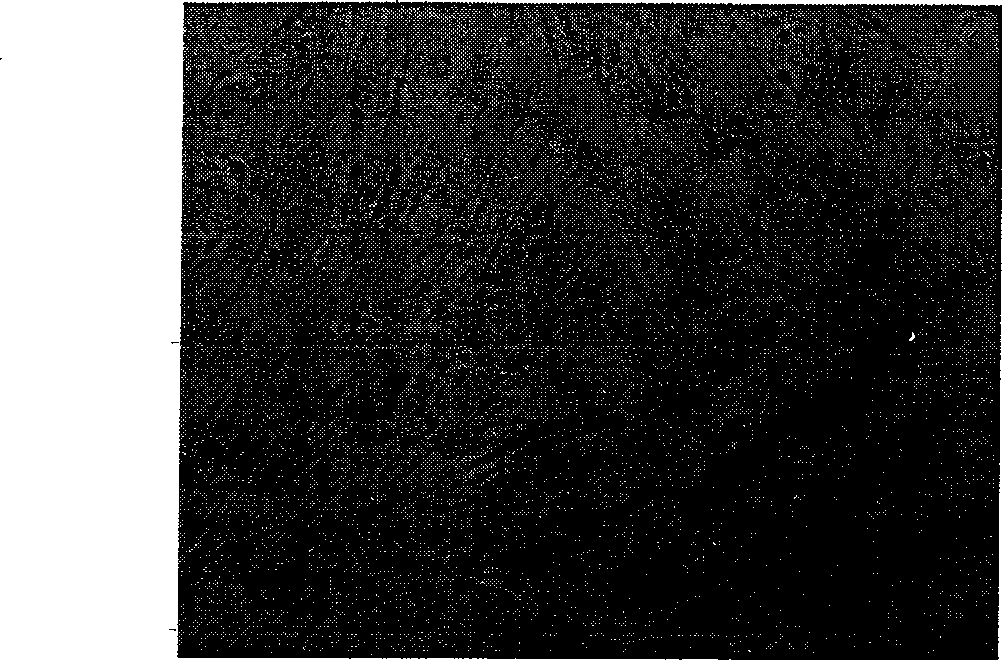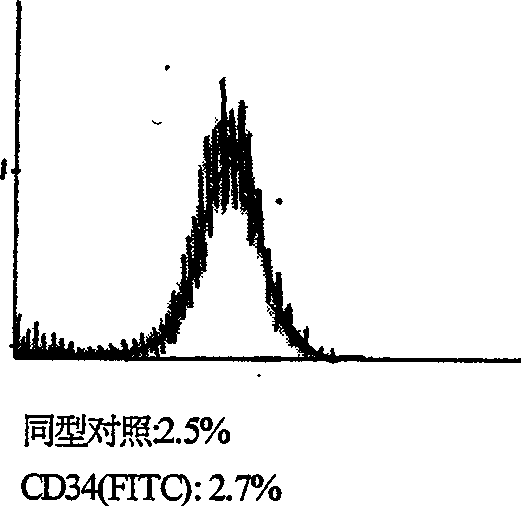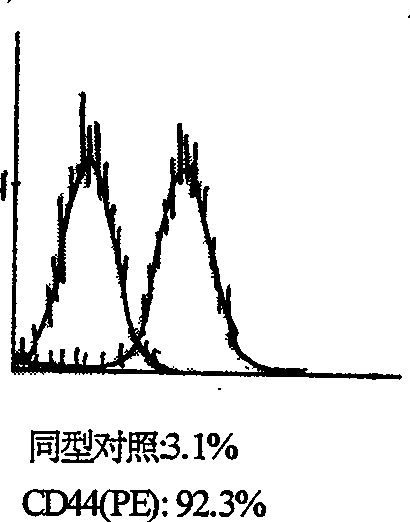Method for amplifying in vitro mesenchymal stem cells
A bone marrow mesenchymal and stem cell technology, applied in the field of cell expansion, can solve the problems of ineffective reduction of amputation rate, strong immunogenicity, insufficient tissue source immune rejection, etc., to solve tumorigenicity and sensitization problem, the effect of high amplification efficiency
- Summary
- Abstract
- Description
- Claims
- Application Information
AI Technical Summary
Problems solved by technology
Method used
Image
Examples
Embodiment 1
[0025] (1) Extract 10ml of bone marrow with a 20ml sterile syringe filled with 2ml of normal saline containing 500u / ml heparin. Shake well and inject into a 50ml sterile centrifuge tube. After diluting with an equal amount of normal saline solution containing 20u / ml heparin, slowly drip along the tube wall and superimpose an equal volume of Ficoll human lymphocyte separation medium with a specific gravity of 1.077g / ml, centrifuge at 2000r / min for 30min, and use First suck out and discard the uppermost layer of lipid with a capillary pipette, then suck out about 20ml of 50% serum, add 80ml of DMEM to make a total of 100ml of medium containing 10% serum from the same subject as the bone marrow, filter, and freeze at -20°C (for the last 5 days of culture), then extend the capillary pipette into the mononuclear cell layer (the milky white cloudy buffy coat layer between the cell separation solution and the plasma), and gently suck out all the cells along the tube wall (the remainin...
Embodiment 2
[0031] (1) Observing the quantity and the shape of the cells obtained after the amplification of Example 1: figure 1 It is a shape diagram of cells obtained after amplification in Example 1. from figure 1 It can be seen that the cells are arranged in a spiral or parallel arrangement, and the cells are in the shape of a long spindle. It shows that the morphology of cells cultured by this method conforms to the morphological characteristics of human bone marrow mesenchymal stem cells.
[0032] (2) The characteristics of the surface antigens CD105+, CD44+, and CD34- of the cells obtained after amplification in Example 1 were detected by flow cytometry. figure 2 It is the surface antigen CD105+ characteristic map of the cells obtained after the amplification of the flow detection embodiment 1; image 3 It is the surface antigen CD44+ characteristic map of the cells obtained after the amplification of the flow detection embodiment 1; Figure 4 It is the surface antigen CD34- c...
PUM
 Login to View More
Login to View More Abstract
Description
Claims
Application Information
 Login to View More
Login to View More - R&D
- Intellectual Property
- Life Sciences
- Materials
- Tech Scout
- Unparalleled Data Quality
- Higher Quality Content
- 60% Fewer Hallucinations
Browse by: Latest US Patents, China's latest patents, Technical Efficacy Thesaurus, Application Domain, Technology Topic, Popular Technical Reports.
© 2025 PatSnap. All rights reserved.Legal|Privacy policy|Modern Slavery Act Transparency Statement|Sitemap|About US| Contact US: help@patsnap.com



